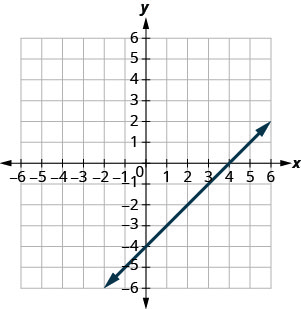4.2E: Exercises
- Page ID
- 30120
Practice Makes Perfect
Recognize the Relationship Between the Solutions of an Equation and its Graph
In the following exercises, for each ordered pair, decide:
- Is the ordered pair a solution to the equation?
- Is the point on the line?
y=x+2
- (0,2)
- (1,2)
- (−1,1)
- (−3,−1)
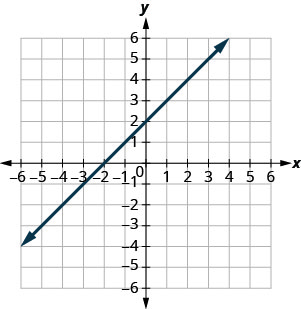
- Answer
-
- yes; no
- no; no
- yes; yes
- yes; yes
y=x−4
- (0,−4)
- (3,−1)
- (2,2)
- (1,−5)
\(y=\frac{1}{2} x-3\)
- (0,−3)
- (2,−2)
- (−2,−4)
- (4,1)
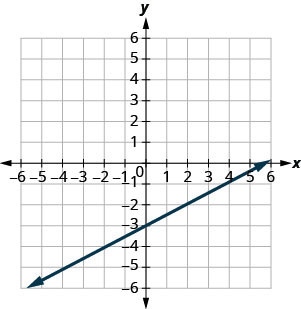
- Answer
-
- yes; yes
- yes; yes
- yes; yes
- no; no
\(y=\frac{1}{3} x+2\)
- (0,2)
- (3,3)
- (−3,2)
- (−6,0)
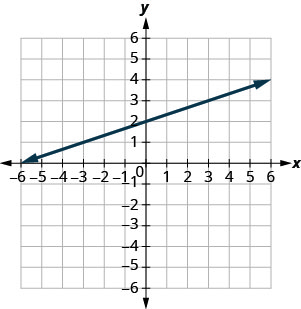
Graph a Linear Equation by Plotting Points
In the following exercises, graph by plotting points.
\(y=3 x-1\)
- Answer
-
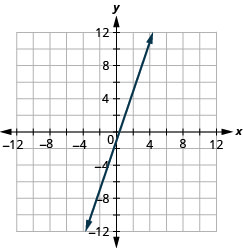
\(y=2 x+3\)
\(y=-2 x+2\)
- Answer
-
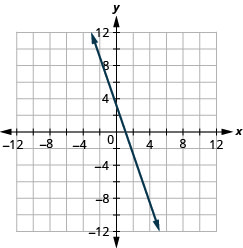
\(y=-3 x+1\)
\(y=x+2\)
- Answer
-
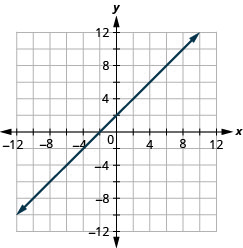
\(y=x-3\)
\(y=-x-3\)
- Answer
-
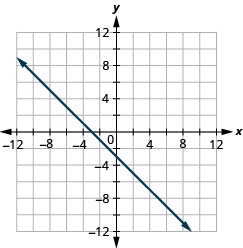
\(y=-x-2\)
\(y=2 x\)
- Answer
-
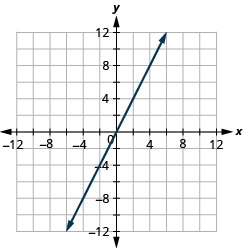
\(y=3 x\)
\(y=-4 x\)
- Answer
-
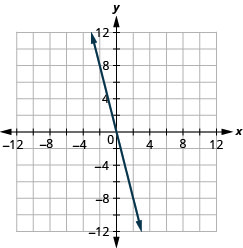
\(y=-2 x\)
\(y=\frac{1}{2} x+2\)
- Answer
-
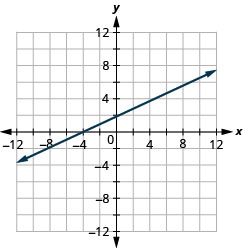
\(y=\frac{1}{3} x-1\)
\(y=\frac{4}{3} x-5\)
- Answer
-
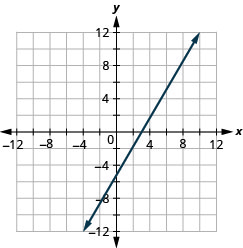
\(y=\frac{3}{2} x-3\)
\(y=-\frac{2}{5} x+1\)
- Answer
-
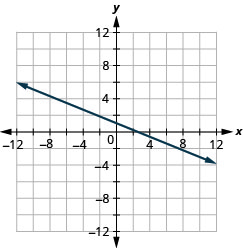
\(y=-\frac{4}{5} x-1\)
\(y=-\frac{3}{2} x+2\)
- Answer
-
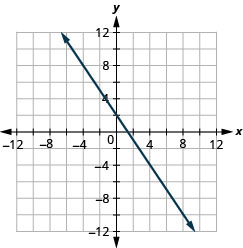
\(y=-\frac{5}{3} x+4\)
\(x+y=6\)
- Answer
-
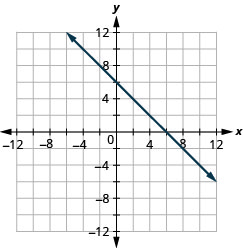
\(x+y=4\)
\(x+y=-3\)
- Answer
-
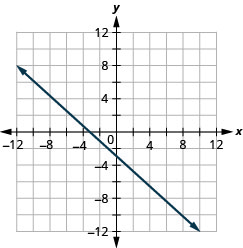
\(x+y=-2\)
\(x-y=2\)
- Answer
-
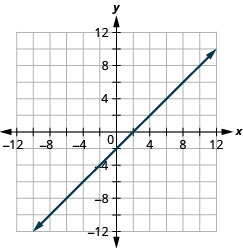
\(x-y=1\)
\(x-y=-1\)
- Answer
-
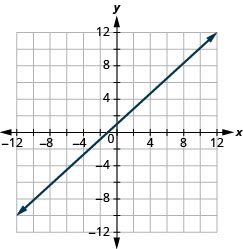
\(x-y=-3\)
\(3 x+y=7\)
- Answer
-
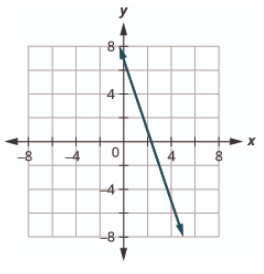
\(5x+y=6\)
2x+y=−3
- Answer
-
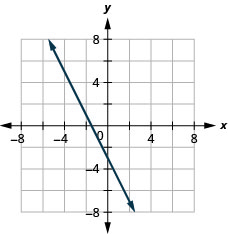
\(4x+y=−5\)
\(\frac{1}{3} x+y=2\)
- Answer
-
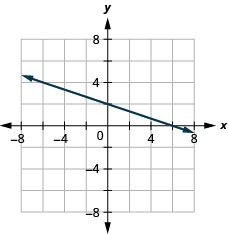
\(\frac{1}{2} x+y=3\)
\(\frac{2}{5} x-y=4\)
- Answer
-
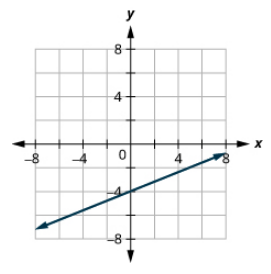
\(\frac{3}{4} x-y=6\)
\(2 x+3 y=12\)
- Answer
-
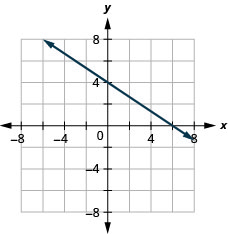
4x+2y=12
3x−4y=12
- Answer
-
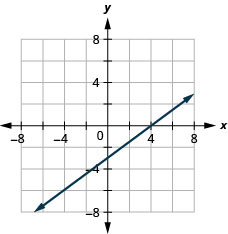
2x−5y=10
x−6y=3
- Answer
-
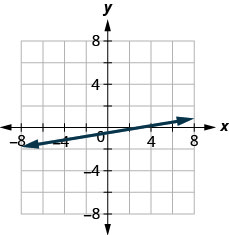
x−4y=2
5x+2y=4
- Answer
-
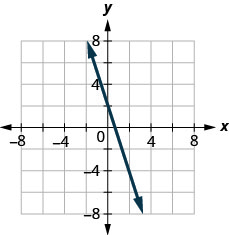
3x+5y=5
Graph Vertical and Horizontal Lines
In the following exercises, graph each equation.
x=4
- Answer
-
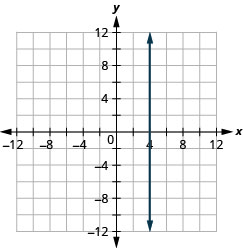
x=3
x=−2
- Answer
-
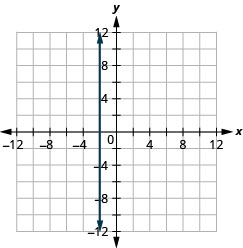
x=−5
y=3
- Answer
-
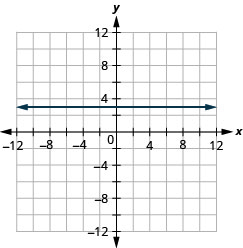
y=1
y=−5
- Answer
-
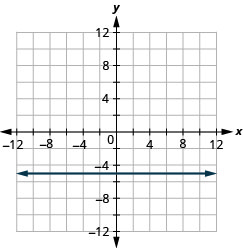
y=−2
\(x=\frac{7}{3}\)
- Answer
-
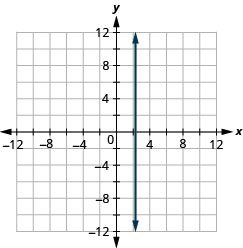
\(x=\frac{5}{4}\)
\(y=-\frac{15}{4}\)
- Answer
-
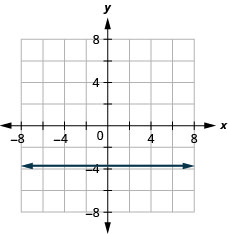
\(y=-\frac{5}{3}\)
In the following exercises, graph each pair of equations in the same rectangular coordinate system.
y=2x and y=2
- Answer
-
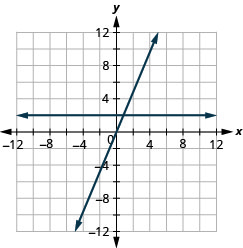
y=5x and y=5
\(y=-\frac{1}{2} x\) and \(y=-\frac{1}{2}\)
- Answer
-
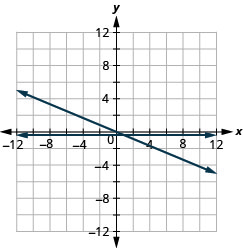
\(y=-\frac{1}{3} x\) and \(y=-\frac{1}{3}\)
Mixed Practice
In the following exercises, graph each equation.
y=4x
- Answer
-
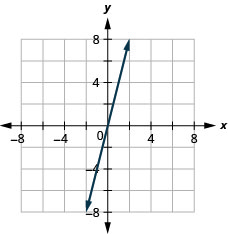
y=2x
\(y=-\frac{1}{2} x+3\)
- Answer
-
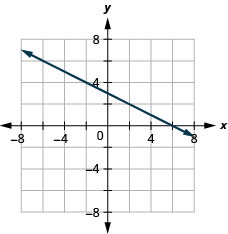
\(y=\frac{1}{4} x-2\)
y=−x
- Answer
-
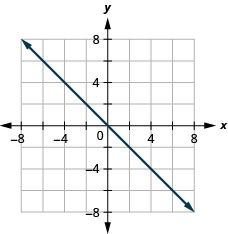
y=x
x−y=3
- Answer
-
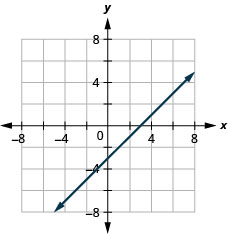
x+y=−5
4x+y=2
- Answer
-
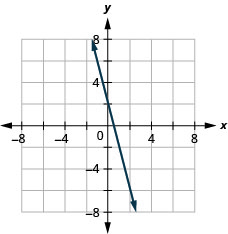
2x+y=6
y=−1
- Answer
-
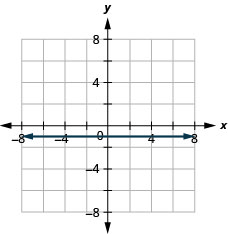
y=5
2x+6y=12
- Answer
-
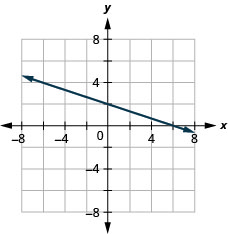
5x+2y=10
x=3
- Answer
-
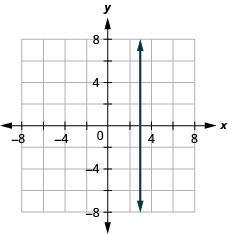
x=−4
Everyday Math
Motor home cost. The Robinsons rented a motor home for one week to go on vacation. It cost them $594 plus $0.32 per mile to rent the motor home, so the linear equation y=594+0.32x gives the cost, yy, for driving xx miles. Calculate the rental cost for driving 400, 800, and 1200 miles, and then graph the line.
- Answer
-
$722, $850, $978
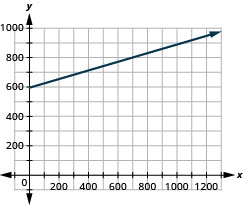
Weekly earnings. At the art gallery where he works, Salvador gets paid $200 per week plus 15% of the sales he makes, so the equation y=200+0.15x gives the amount, yy, he earns for selling x dollars of artwork. Calculate the amount Salvador earns for selling $900, $1600, and $2000, and then graph the line.
Writing Exercises
Explain how you would choose three \(x\) - values to make a table to graph the line \(y=\frac{1}{5} x-2\)
- Answer
-
Answers will vary.
What is the difference between the equations of a vertical and a horizontal line?
Self Check
ⓐ After completing the exercises, use this checklist to evaluate your mastery of the objectives of this section.

ⓑ After reviewing this checklist, what will you do to become confident for all goals?



